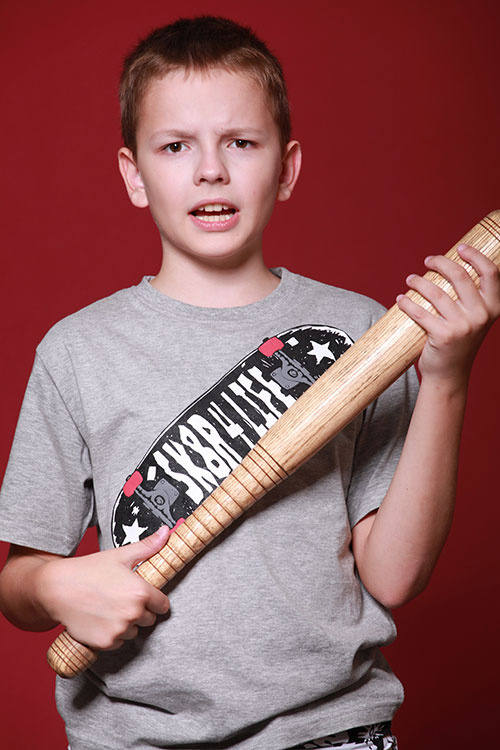When Your Child Is the Bully
 When parents find out their child is a bully, it can be alarming and confusing. Parents can easily get hung up on the small details of the situation. But the main thing they must do is provide their child with clear, concise descriptions of appropriate and inappropriate social behaviors and teach him or her how to use the appropriate ones.
When parents find out their child is a bully, it can be alarming and confusing. Parents can easily get hung up on the small details of the situation. But the main thing they must do is provide their child with clear, concise descriptions of appropriate and inappropriate social behaviors and teach him or her how to use the appropriate ones.
Bullying is not an easy phenomenon to understand. It's defined as a behavior where one person of greater power (size, social standing, ability, etc.) tries to intimidate or demean another individual of lesser power, usually to achieve social gains (increasing or maintaining popularity or authority.)
Even the most kind and compassionate children can engage in bullying behaviors. In early and middle childhood, physical bullying such as pushing, and ostracism and name-calling, are the most common types. In adolescence, these behaviors include spreading false information about others, bullying on social media platforms and socially excluding victims.
If your child is bullying others, it's important to take a firm stand against his or her behaviors and teach appropriate replacement behaviors. Permissive parenting practices can not only lead to more bullying, but also can create a greater risk of psychological maladjustment and poor-quality relationships over a child's life.
 Effectively Responding to Your Child's Bullying Behaviors
Effectively Responding to Your Child's Bullying Behaviors
The following steps can serve as starting points in addressing your child's bullying behaviors:
-
Be Clear: As you find out more information about the situation, explain to your child that his or her behaviors do not align with your or your family's expectations. Specifically describe the inappropriate behaviors to your child. For example, say, “You shared personal information about someone without their permission or knowledge" rather than “You spread rumors." Also, make sure your child knows exactly what was inappropriate about his or her behavior.
-
Be Factual: In a neutral and calm tone of voice, discuss the information you have gathered about your child's bullying behaviors with your child. It may be impossible to have all of the facts and details, and you're likely to hear different or competing stories of what happened. So rely on what you know, and don't try to “trap" your child in order to get him or her to tell you the truth. Just share the information you have and let your child respond.
-
Be Calm: Model appropriate behavior while talking to your child by maintaining self-control. If your child responds by becoming angry or defensive, or refuses to talk with you, stop the discussion and give him or her time to calm down. Let your child know there will be consequences for his or her inappropriate behavior, and continue your discussion only when your child demonstrates a calm demeanor.
-
Be Consistent: If you have not done so in the past, set or review with your child your family's standards for treating others with respect and dignity, and not threatening their safety. Then explain the consequences for failing to meet those standards and have your child earn those consequences for his or her bullying behavior. Consistently give your child consequences for similar behaviors in the future.
-
Be Firm: Your child may be upset about receiving consequences for his or her bullying behaviors. But make sure you follow through on the consequences, and do not try to “save" your child by decreasing them or making them easier. For example, if your child bullied someone through social media, the logical consequence would be taking away his or her access to technology for a significant amount of time. You can praise your child for saying he or she knows why the bullying behavior was wrong, but you still give the consequence.
Once your child understands that bullying is wrong and that there are consequences for bullying others, and accepts those consequences, you can start teaching him or her appropriate ways to treat people. One way to do this is by modeling how to compliment others, provide positive feedback and build relationships based upon mutual trust and loyalty.
While it may sound strange, bullying is a social event that some children actually use to develop relationships. Many children and adolescents bully others because they have discovered they can gain at least temporary social approval and have friendships with others who also engage in bullying.
As a parent, your task is to teach your child how to develop relationships in ways that are healthy, respectful and not hurtful.
Additional Resources
- cyberbullying.org
- stopbullying.gov
- empowerment.unl.edu
- Nebraska Bullying Prevention and Intervention Initiative
Kid Tips;Bullying
